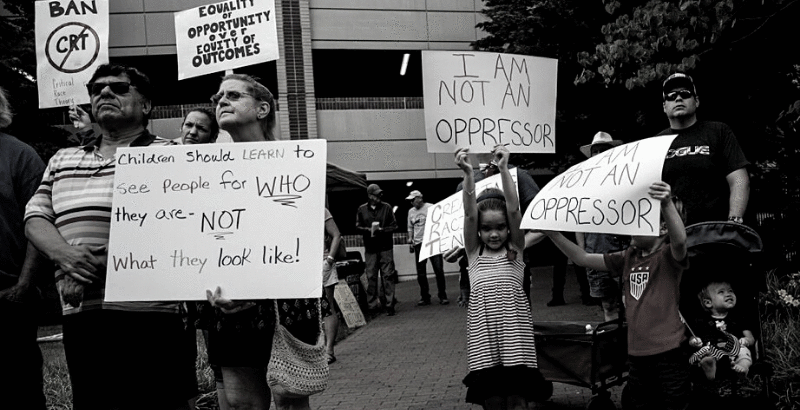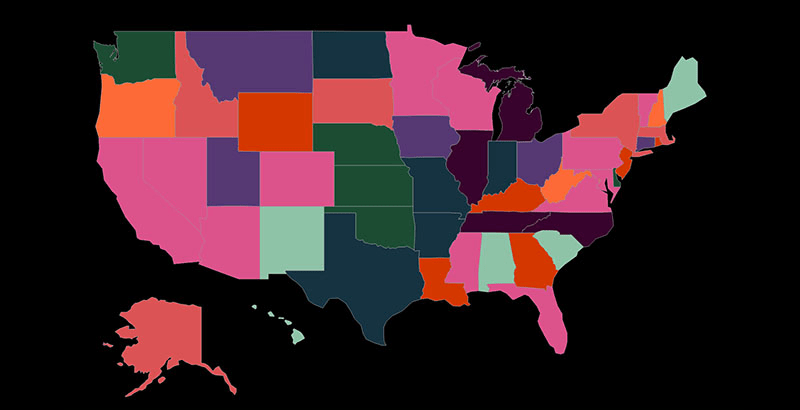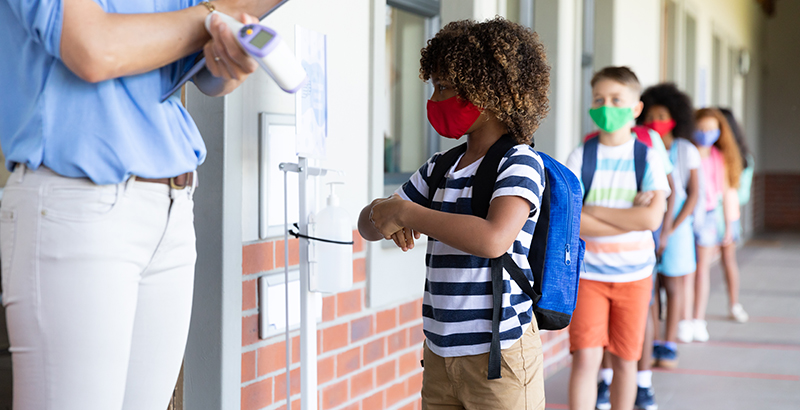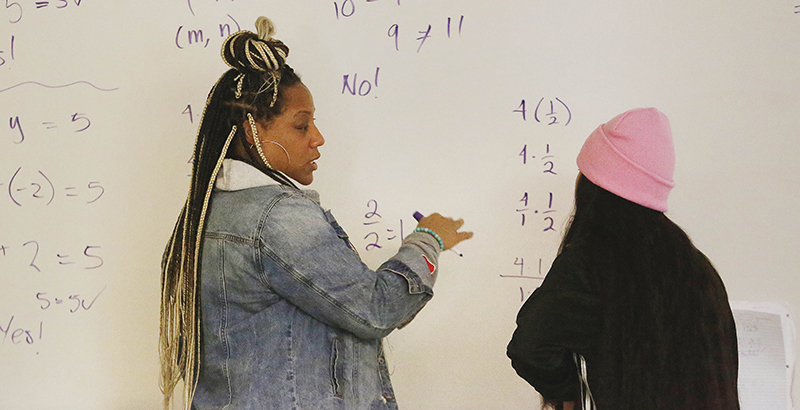Our 11 Best Education Articles from July: Plummeting School Enrollment, Fearing a ‘Second Pandemic’ of Student Trauma, Educators Overwhelmed By Critical Race Theory Furor & More
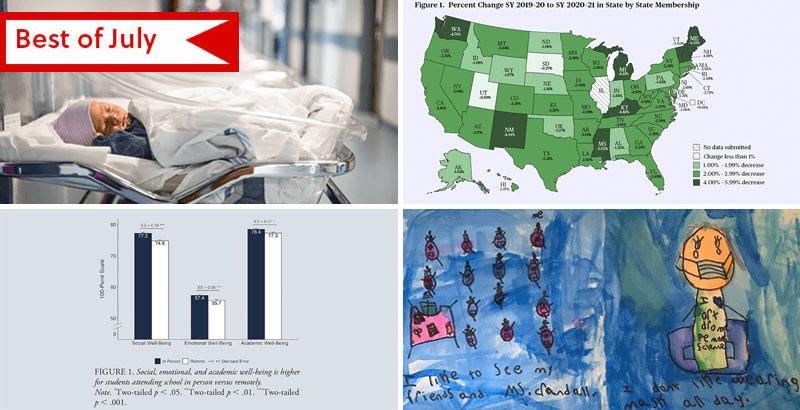
From the escalating fight surrounding critical race theory to emerging details about states’ plans to spend their federal education relief funds, it was a busy month on the education beat in July. Here at The 74, we also launched several long-in-the-works features, including a special series on America’s declining birth rate and the resulting long-term implications for school attendance and budgets. Also atop the highlights this month: Final statistics about 2020-21 school enrollment, which showed a three percent decline in attendance that includes 22 percent fewer public pre-k students.
Here were our most popular articles of the month:
Chaos Theory: Amid Pandemic Recovery Efforts, School Leaders Fear Critical Race Furor Will ‘Paralyze’ Teachers
Politics of Curriculum: Calls for teachers to wear body cameras, mountains of records requests and threats against school administrators are among the flashpoints in an emerging new front in the nation’s culture wars, as parents and other opponents of critical race theory push back against its perceived influence in the classroom. Nine states have banned implementation of the once-obscure theory, which in the minds of many encompasses a host of racial and equity-related initiatives, from culturally responsive teaching to social-emotional learning. For many teachers, the backlash feels like a new kind of McCarthyism, where they fear being harassed, fined or fired for a wide array of classroom activities associated with the examination of structural racism in America. “It’s a huge distraction at a time when we can’t afford a distraction,” Dan Domenech, executive director of AASA, The School Superintendents Association, told reporter Linda Jacobson. “This has been a year the majority of students were not exposed to the kind of learning they should have been exposed to. Now you’re going to paralyze teachers because they are afraid to teach.” Read our full report.
— Liability: Teachers unions promise money and support to members teaching “honest history” (Read more)
New Federal Data Confirms Pandemic’s Blow to K-12 Enrollment, With Drop of 1.5 Million Students; Pre-K Experiences 22 Percent Decline
Disenrollment: Preliminary data released by the National Center for Education Statistics yesterday show that public school enrollment dropped 3 percent in 2020-21 from the year before. The sizable decline — about 1.5 million students, compared with 2019-20’s total population of 51.1 million — was felt across the country, with the biggest decreases in Puerto Rico (minus 5.51 percent), Mississippi and Vermont (tied with minus 5.02 percent). The drop was concentrated heavily among the youngest children: Kindergarten enrollment fell by 9 percent, pre-K by an astonishing 22 percent, even as the high school ranks thinned by just .4 percent. Most of those young learners are expected to return to in-person classrooms, but Robin Lake, head of the Center on Reinventing Public Education, said schools and districts need to prepare now to meet academic and social-emotional needs that had been deferred in the interim. “These kids are owed a lot in terms of the time they’ve missed learning things, playing with other kids, all of that stuff,” she told The 74’s Kevin Mahnken. “So we’re encouraging school districts to put those kinds of supports in place this summer and try to reach as many kids as possible to address some of those foundational skills.” Read our full report.
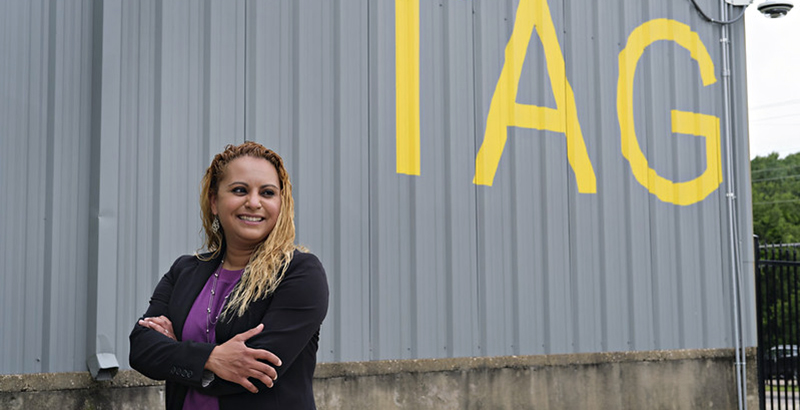
Fearing a ‘Second Pandemic’ of Student Trauma, School Leaders Are Doubling Down on Mental Health First Aid Training
Special Report: Between April and October, emergency room visits rose 24 percent for kids ages 5 to 11 and 31 percent for ages 12 to 17 over the year before, a trend experts attribute to pandemic stressors adding to the already mounting crisis of anxiety-related disorders in young people. As students return to in-person classes, these symptoms are showing up in classrooms — and teachers are the first line of defense. Fearing what this means for the coming school year, educators are signing up for Mental Health First Aid certification. The course, administered by nonprofits including Communities in Schools, reminds adults nationwide that they aren’t “superheroes” — but they can guide young people toward getting help with a mental health challenge while decreasing the stigma and judgment around the struggles many are facing in the pandemic’s wake. In this first installment of a three-part series, presented in partnership with Texas Tribune, Bekah McNeel looks at how this training is helping educators at one Texas school — and teachers around the country — deal with their students’ often hidden mental health issues. Read the opening feature.
— Pandemic Counseling: A San Antonio mental health desert became a beacon of counseling services for thousands of children and families (Read more)
— Students’ View: Second graders “show” their pandemic challenges through art and “tell” how their teacher helped them stay strong (Read more)
How Are States Spending Their COVID Education Relief Funds?
Federal Relief: Asked by the U.S. Education Department to identify the top issues facing students and schools in the wake of the pandemic, state education officials are remarkably consistent: Their plans for spending their share of federal COVID relief aid for education demonstrate a strong need to expand learning opportunities and address students’ social and emotional needs. But an analysis by FutureEd, a think tank at Georgetown University’s McCourt School of Public Policy, finds that in the 39 states that have submitted to the department to date, education leaders are pursuing those goals in a variety of ways. Contributors Brooke LePage and Phyllis W. Jordan of FutureEd break down how, from tutoring and mental health supports to universal pre-K, museum trips — even a student film festival — states are looking to spend their COVID ed relief funds. Read the essay, and click through our interactive maps. Read our full analysis.
Spread of Delta Variant Marks ‘Most Dangerous’ Time in Pandemic for Kids, May Force Schools to Re-Up Safety Measures, Experts Say
School Safety: If you’ve gotten both of your coronavirus shots, the worst of the pandemic is probably behind you. But for kids under 12 still awaiting vaccine eligibility, spread of the highly contagious Delta COVID variant poses a potent threat — and may force schools to double down on mitigation measures in order to reopen safely, health experts say. It’s “one of the most dangerous time periods [in the pandemic] for people who aren’t vaccinated,” said Taylor Nelson, a University of Missouri doctor specializing in infectious disease. “Kids are probably the group now that are most susceptible to infection,” said University of Michigan epidemiologist Joshua Petrie. As youth infections surge in Israel and the United Kingdom and the new variant spreads “like wildfire” in undervaccinated pockets of the U.S., the stakes have been raised on the campaign to immunize adolescents — and may spell the return of measures like masking and ventilation next school year. This is already happening in Los Angeles County, which this week reimposed mask mandates indoors regardless of vaccination status. Asher Lehrer-Small has the story.
Can Right Answers Be Wrong? Latest Clash Over ‘White Supremacy Culture’ Unfolds in Unlikely Arena: Math Class
Math Skills: A document outlining how to be an “antiracist math educator” has sparked criticism for promoting the idea that focusing on getting students to produce the right answer is one way that “white supremacy culture” shows up in math class. Educators drawing inspiration from the document, part of a larger math equity project at The Education Trust-West — funded with $1 million from the Bill and Melinda Gates Foundation — say the emphasis on accurate calculations shuts down students’ thinking process and turns math into a competition. They say the middle grades especially are a period when many Black and Hispanic students turn off math, resulting in persistent racial disparities in advanced high school classes. Making math more culturally relevant by linking concepts to socioeconomic issues, they say, can help students see the reasons for math in their lives. But some Black scholars think the document only reinforces teachers’ bias against students of color. “The workbook’s ultimate message is clear: Black kids are bad at math, so why don’t we just excuse them from really learning it,” Erec Smith of York College of Pennsylvania told reporter Linda Jacobson. And even math educators devoted to increasing equity said the document can widen divides at a time of political polarization. Read our full report.
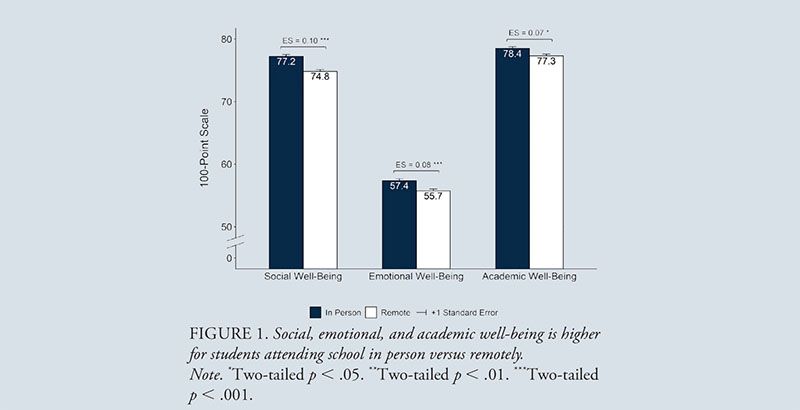
High Schoolers Who Took Remote Classes During Pandemic Experienced a “Thriving Gap,” According to Duckworth-Led Study
Achievement Gaps: Research from the past year, including a wave of worrying standardized test results, has highlighted the academic consequences of months of remote schooling necessitated by COVID-19. But while math and reading scores are disappointing in their own right, most educators and parents are equally anxious about how the pandemic is changing students’ inner lives. In a study published today by the American Education Research Association, a team of researchers including psychologist Angela Duckworth found that thousands of high schoolers attending virtual classes at the height of the pandemic reported that they were worse off socially, emotionally and academically than their peers in physical classrooms. The study points to what the authors call a “thriving gap,” particularly among kids in later grades. Read our full report.
‘We are Becoming Grayer’: New Hampshire’s Shrinking Birth Rates and Shuttered Schools Offer Preview for the Nation
School Funding: According to federal data released in May, U.S. fertility rates hit another record low in 2020, with the fewest babies born in 40 years. Though COVID-19 has dissuaded many women from starting or expanding their families, the origins of the national baby bust stretch back well over a decade. The demographic slowdown is particularly severe in New Hampshire, where deaths have outpaced births for four years and the diminishing pool of children is starting to be felt in schools: In Manchester, a former industrial powerhouse and the state’s largest district, the student population has shrunk by over one-fifth in the last decade, and many schools are well below capacity. In response, local leaders approved the closure of a beloved 130-year-old elementary school and are considering consolidating three high schools that are collectively underenrolled by 1,500 students. While northern New England is the country’s slowest-growing region, the tough choices it’s facing could soon be coming to a school near you. “It’s a very different dynamic than what it used to be when my dad went to elementary school, where the classes were bigger and there were more kids in general,” one parent told reporter Kevin Mahnken. “It’s not like that now.” Read our special report.
— Related: Falling birth rates spur clash over race and school choice in Michigan (Read more)
In Pursuit of a Better Democracy or Something Else: Oklahoma Latest State to Require High Schoolers to Pass Citizenship Test
Civics Ed: Oklahoma House Speaker Pro Tempore Terry O’Donnell believes that making high school students pass a citizenship test to graduate will cut down on “a proliferation of mobs” in America. “The beauty of our democracy is that there is a way to address all grievances,” O’Donnell said. “Mob violence or mob activity … is not part of the solution. It just adds to the problem.” Other states that administer the U.S. Citizenship and Immigration Services test to high schoolers include Arizona, Arkansas, Idaho, Kentucky and Tennessee, while New Hampshire has its own version and Florida just passed a law that would make state college and university students subject to a civics assessment. Opponents in Oklahoma say the requirement is an unfunded mandate amounting to little more than rote memorization; that its real purpose is to target undocumented students while winning conservative political points; and that it will reduce graduation rates. Read our full report.
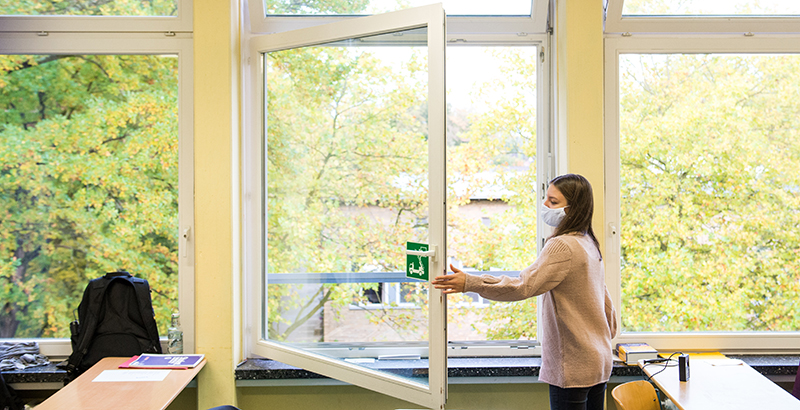
Parents Want Better School Ventilation This Fall. But the Devil is in the Details — and the Expense
Infrastructure: When RAND Inc. researchers last spring made a list of 13 items that would make parents feel safe about in-person schooling this fall, the No. 1 priority wasn’t teacher or student vaccines, social distancing or regular COVID testing. It was ventilation. Perhaps that’s because COVID-19 has made our most basic act — breathing — newsworthy. But that’s one wish that isn’t likely to be granted anytime soon — and the reasons go beyond Washington politics or the fine print in recent federal relief bills. The biggest problem, according to the latest reporting from 74 contributor Greg Toppo, is the price tag. A 2020 study by the U.S. Government Accountability Office found that 41 percent of districts needed to update or replace the heating, ventilation and air conditioning systems in at least half their schools — about 36,000 nationwide — and the cost of upgrades is about $1 million per building. If half of the 36,000 buildings get upgrades and the rest get entirely new HVAC systems, it could cost schools about $72 billion, the GAO estimated. Read our full analysis.
Steiner & Wilson: Case Study — Some Tough Questions, and Some Answers, About Fighting COVID Slide While Accelerating Student Learning
Literacy: How prepared are district leaders, principals and teachers as they work to increase learning readiness for on-grade work this fall? That’s the question posed by contributors David Steiner and Barbara Wilson in a case study examining how a large urban district sought to adapt materials it was already using to implement an acceleration strategy for early elementary foundational skills in reading. Among the insights to be drawn: First, planning is critical. Leaders need to set out precisely how many minutes of instruction will be provided, the exact learning goals and the specific materials; identify all those involved (tutors, specialists, and teachers); and give them access to the shared professional development on the chosen acceleration strategies. Second, this requires a sea change from business as usual, where teachers attempt to impart skill-based standards using an eclectic rather than a coherent curriculum. It is not possible to accelerate children with fragmented content. All efforts to prepare students for grade-level instruction must rest on fierce agreement about the shared curriculum to be taught in classrooms. What we teach is the anchor that holds everything else in place. Read our full case study.
Go Deeper: Get essential education news and commentary delivered straight to your inbox. Sign up here for The 74’s daily newsletter.
Get stories like these delivered straight to your inbox. Sign up for The 74 Newsletter

;)
